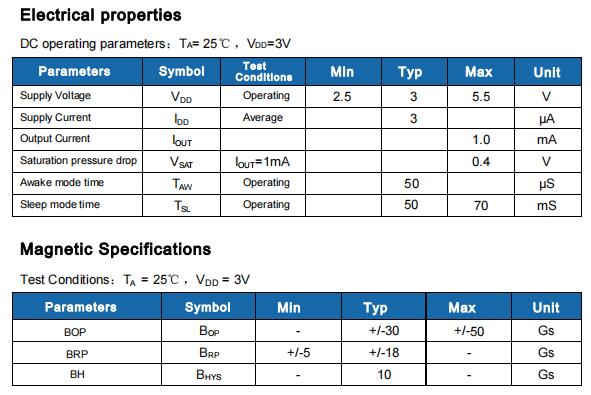
Hall switches are often used in the intelligent control function of shared power banks. By sensing the user's operation and the connection status of the charging device, the Hall switch can automatically turn on or off the power output of the power bank. When the user connects the device to charge, the power bank will automatically turn on the power supply to provide convenient charging services. Once the device is fully charged or disconnected, the Hall switch will automatically turn off the power output to save energy.
Recommended model: HS248 omnipolar micro-power Hall switch
HS248 is a non-polar Hall switch based on mixed-signal CMOS technology. This IC uses advanced chopper stabilization technology to provide accurate and stable magnetic switch points.
In terms of circuit design, HS248 provides an embedded controlled clock mechanism to provide a clock source for the Hall device and analog signal processing circuit. At the same time, this controlled clock mechanism can send a control signal to make the circuit with high current consumption enter the "sleep" mode periodically;
Also through this mechanism, the chip is periodically "woken up" and detects the strength of the magnetic field passing through the Hall device according to the predetermined magnetic field strength threshold.
If the magnetic flux density is higher than the "operating point" threshold or lower than the "release point" threshold, the open-drain output transistor is driven and latched into the corresponding state. During the "sleep" cycle, the output transistor is locked in its previous state.
In battery-powered applications, this design provides the best support for extending the working life. The output transistor of HS248 is locked in the on state when there is a certain strong south or north magnetic field facing the package marking side, and locked in the off state when there is no magnetic field.

 English
English Chinese
Chinese Dongguan Hallsen Technology Co., Ltd
Dongguan Hallsen Technology Co., Ltd